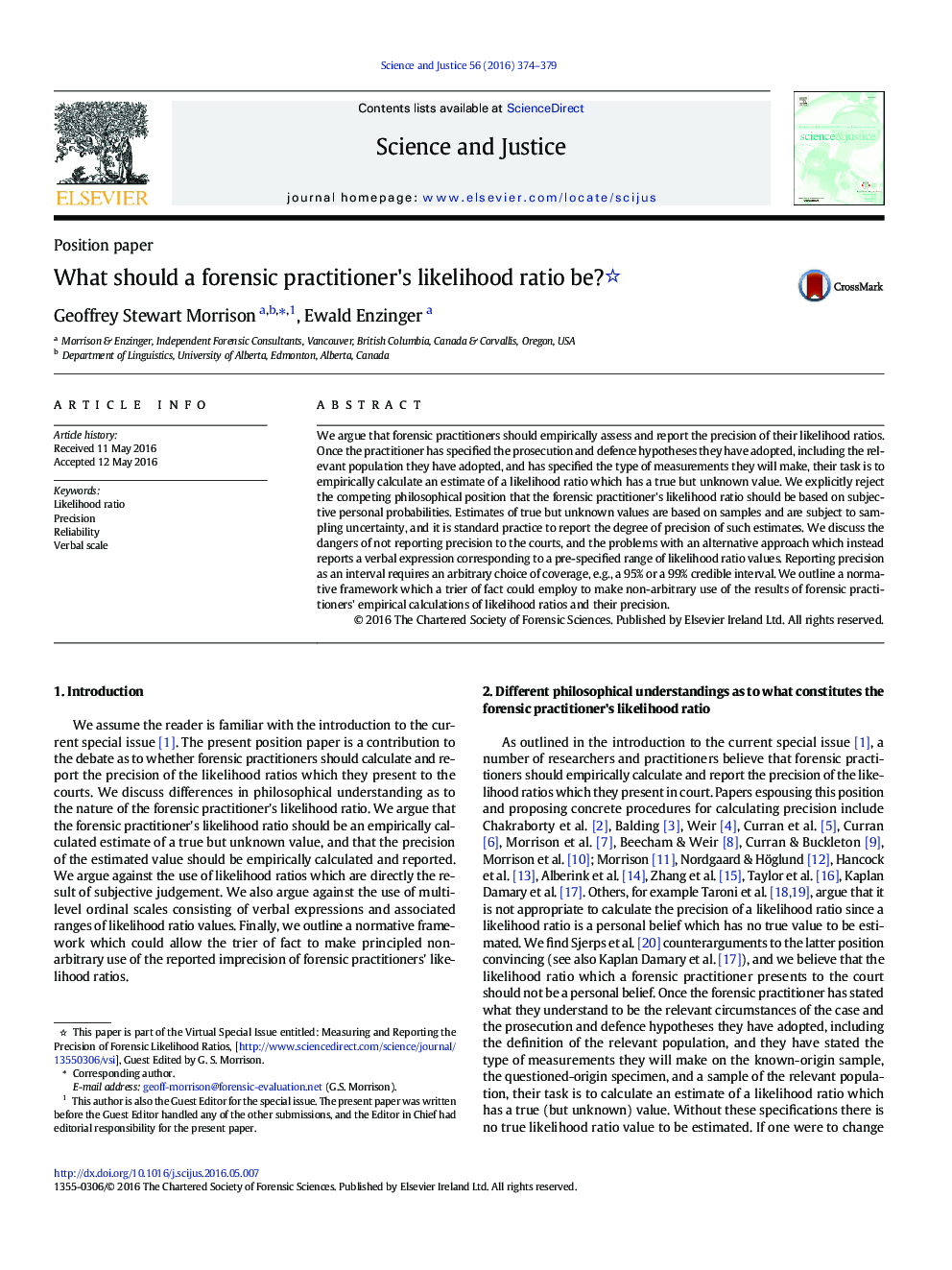| کد مقاله | کد نشریه | سال انتشار | مقاله انگلیسی | نسخه تمام متن |
|---|---|---|---|---|
| 4761351 | 1362096 | 2016 | 6 صفحه PDF | دانلود رایگان |
- Forensic practitioners should assess and report the precision of likelihood ratios.
- Forensic practitioners' likelihood ratios should be empirically calculated.
- They should not be based on subjective personal probabilities.
- Verbal scales should not be used.
We argue that forensic practitioners should empirically assess and report the precision of their likelihood ratios. Once the practitioner has specified the prosecution and defence hypotheses they have adopted, including the relevant population they have adopted, and has specified the type of measurements they will make, their task is to empirically calculate an estimate of a likelihood ratio which has a true but unknown value. We explicitly reject the competing philosophical position that the forensic practitioner's likelihood ratio should be based on subjective personal probabilities. Estimates of true but unknown values are based on samples and are subject to sampling uncertainty, and it is standard practice to report the degree of precision of such estimates. We discuss the dangers of not reporting precision to the courts, and the problems with an alternative approach which instead reports a verbal expression corresponding to a pre-specified range of likelihood ratio values. Reporting precision as an interval requires an arbitrary choice of coverage, e.g., a 95% or a 99% credible interval. We outline a normative framework which a trier of fact could employ to make non-arbitrary use of the results of forensic practitioners' empirical calculations of likelihood ratios and their precision.
Journal: Science & Justice - Volume 56, Issue 5, September 2016, Pages 374-379
